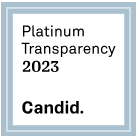#MythbusterMonday - October 2017 Myths Busted
/We begin each week using our online voice to debunk myths about hunger. Our #MythbusterMonday social media series dispels misinformation and stigma commonly associated with food assistance programs like CalFresh/SNAP and school meals and the people who rely on them to help put food on the table.
What hunger myths have you heard? Join us in sharing the truth about hunger each Monday using the hashtag #MythbusterMonday.
In October we busted the following hunger myths:
October 2
The first Monday of the month we take a look back at the myths busted the previous month. Check out the myths we busted in September 2017 here.
October 9
#MythbusterMonday “People on food stamps are just lazy.” False! The majority of SNAP (formerly know as food stamps) recipients (75% nationally) who can work, do so. Those who are employed, often at multiple jobs, can’t always earn enough to cover their costs and afford the nutrition necessary for themselves and their family. Click to learn more from MAZON: A Jewish Response to Hunger.
October 16
#MythbusterMonday “SNAP fraud is common.” False! "SNAP fraud rates are extremely low. Every year, states thoroughly evaluate a sample of their SNAP accounts to determine rates of fraud and errors; they also investigate trafficking (selling benefit cards for cash). And it turns out, less than 1% of SNAP benefits go to people who should have been considered ineligible." Click here to learn more.
October 23
#MythbusterMonday “All poor people get food stamps.” False! The U.S. Department of Agriculture estimates that 1/4 of eligible people don’t sign up. Many people don’t know they are eligible for federal nutrition assistance. Others don’t sign up because they have trouble navigating the system or fear being stigmatized.
October 30
#MythbusterMonday “You have to be a U.S. citizen to get CalFresh.” False! Some eligible legal immigrants may qualify for CalFresh. Ask your local CalFresh Office. Click here to find a location.






